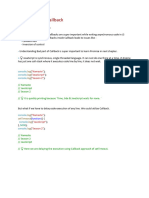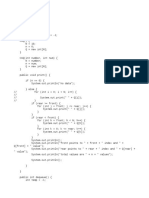0% found this document useful (0 votes)
22 views19 pagesJS Key Points
JavaScript is a high-level, lightweight scripting language used for interactive web applications, featuring dynamic typing, event-driven execution, and cross-platform compatibility. TypeScript, a superset of JavaScript, adds static typing for improved code quality and maintainability. The document also covers asynchronous programming concepts, including callbacks, promises, and async/await, as well as various JavaScript features and best practices.
Uploaded by
realvikram7Copyright
© © All Rights Reserved
We take content rights seriously. If you suspect this is your content, claim it here.
Available Formats
Download as PDF, TXT or read online on Scribd
0% found this document useful (0 votes)
22 views19 pagesJS Key Points
JavaScript is a high-level, lightweight scripting language used for interactive web applications, featuring dynamic typing, event-driven execution, and cross-platform compatibility. TypeScript, a superset of JavaScript, adds static typing for improved code quality and maintainability. The document also covers asynchronous programming concepts, including callbacks, promises, and async/await, as well as various JavaScript features and best practices.
Uploaded by
realvikram7Copyright
© © All Rights Reserved
We take content rights seriously. If you suspect this is your content, claim it here.
Available Formats
Download as PDF, TXT or read online on Scribd
/ 19
























































































